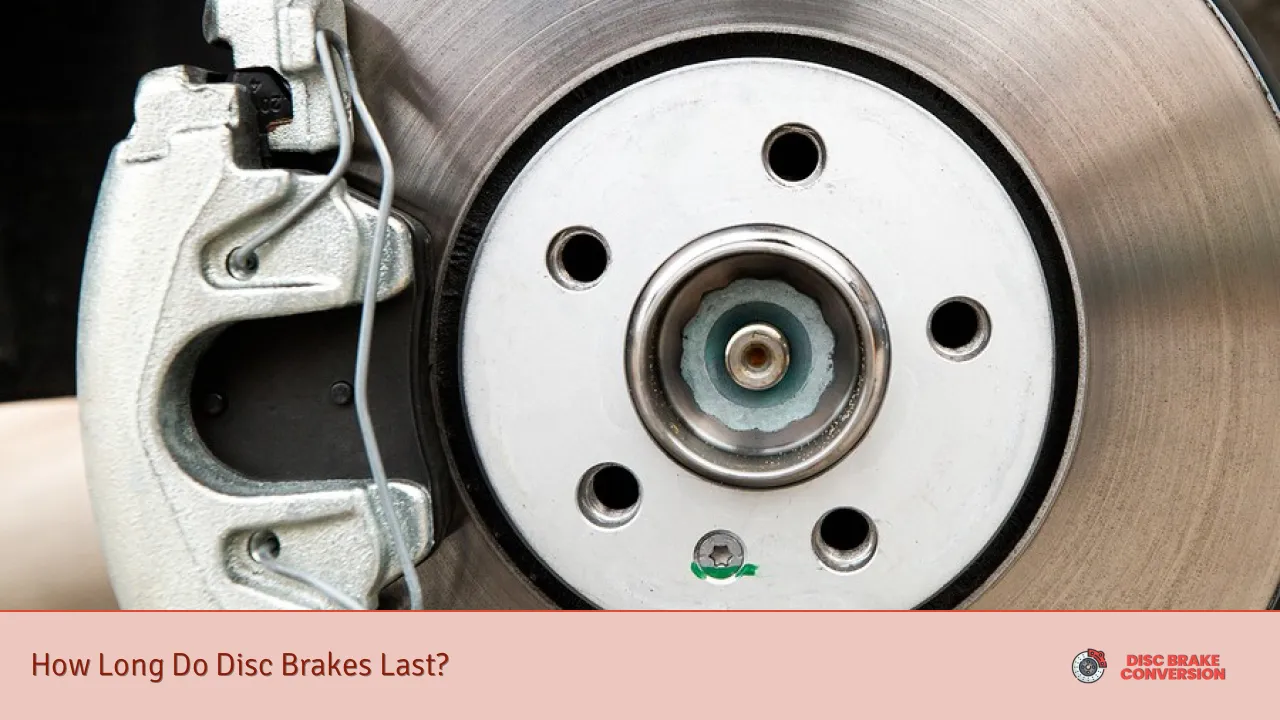Disc brakes are a crucial component of modern vehicle braking systems, offering superior performance and safety compared to traditional drum brakes. Understanding how long disc brakes last is essential for vehicle maintenance and ensuring safety on the road. Typically, the lifespan of disc brakes can vary significantly based on several factors, including driving habits, vehicle type, and maintenance practices.
In general, disc brakes can last between 50,000 to 80,000 miles under normal driving conditions. However, with proper care and maintenance, some drivers may extend their lifespan up to 120,000 miles. Conversely, neglecting maintenance or engaging in aggressive driving can lead to deterioration at around 25,000 miles.
To help you grasp the key aspects of disc brake longevity, the following table summarizes the factors influencing their lifespan:
| Factor | Impact on Lifespan |
|---|---|
| Driving Style | Aggressive driving shortens lifespan |
| Vehicle Type | Heavier vehicles wear brakes faster |
| Maintenance | Regular checks extend lifespan |
| Road Conditions | Potholes and rough terrain increase wear |
| Brake Pad Quality | High-quality pads reduce wear on discs |
Factors Affecting Disc Brake Longevity
Several factors can influence how long your disc brakes will last. Understanding these elements can help you make informed decisions about maintenance and replacement.
- Driving Style: The way you drive significantly impacts brake wear. Frequent hard braking or aggressive driving can lead to quicker wear of both brake pads and discs. Smooth driving habits, such as gradual braking and anticipating stops, can prolong their life.
- Vehicle Type: Heavier vehicles exert more force on the braking system, which can lead to faster wear of the discs. For instance, SUVs and trucks typically experience more rapid brake wear compared to smaller cars due to their weight.
- Maintenance: Regular maintenance is crucial for extending the life of your disc brakes. This includes routine inspections for signs of wear or damage and timely replacements of worn components. Neglecting maintenance can lead to more severe issues that require costly repairs.
- Road Conditions: Driving on rough or uneven surfaces can increase the strain on your braking system. Potholes and gravel roads can contribute to quicker wear due to additional stress placed on the discs.
- Brake Pad Quality: The type and quality of brake pads used also play a significant role in disc longevity. Harder pads may last longer but can be more abrasive on discs. Conversely, softer pads may preserve the discs but wear out faster.
Understanding these factors allows drivers to adopt better practices that enhance the longevity of their disc brakes.
Signs That Your Disc Brakes Need Replacement
Knowing when to replace your disc brakes is essential for maintaining vehicle safety. Here are some common signs indicating that your brakes may need attention:
- Squeaking or Grinding Noises: If you hear unusual sounds when applying the brakes, it could indicate that the brake pads are worn down and need replacement.
- Vibration When Braking: A pulsating sensation in the brake pedal may suggest warped discs. This condition requires immediate attention as it affects braking efficiency.
- Reduced Braking Performance: If you notice an increase in stopping distance or a decrease in overall braking power, it’s time to have your brakes inspected.
- Visible Damage: Inspecting your brake discs for grooves, cracks, or discoloration can reveal whether they need replacement. Any visible damage should be addressed promptly.
- Warning Lights: Many modern vehicles come equipped with warning systems that alert drivers when brake components are worn out. Pay attention to these alerts as they are designed for your safety.
By being vigilant about these signs, you can prevent further damage and ensure your vehicle remains safe to drive.
Tips for Extending the Life of Your Disc Brakes
To maximize the lifespan of your disc brakes, consider implementing these practical tips:
- Adopt Smooth Driving Habits: Avoid sudden stops and aggressive acceleration whenever possible. Smooth driving reduces strain on your braking system.
- Regular Maintenance Checks: Schedule routine inspections with a qualified mechanic who can assess the condition of your brake components and replace them as needed.
- Choose Quality Brake Pads: Invest in high-quality brake pads that are compatible with your vehicle. Quality materials often lead to less wear on both pads and discs.
- Avoid Overloading Your Vehicle: Excess weight increases stress on your brakes. Ensure you adhere to your vehicle’s weight limits for optimal performance.
- Keep Your Vehicle Clean: Regularly clean your wheels and brake components to remove dirt and debris that may contribute to premature wear.
Implementing these strategies not only enhances brake longevity but also improves overall vehicle safety.
Conclusion
Understanding how long disc brakes last is vital for any vehicle owner aiming for safety and performance. With an average lifespan ranging from 50,000 to 80,000 miles under normal conditions, various factors such as driving habits and maintenance practices play a critical role in determining their durability. By being proactive about maintenance and adopting smoother driving techniques, drivers can significantly extend the life of their disc brakes while ensuring safe operation on the road.
FAQs About How Long Do Disc Brakes Last?
- How often should I replace my disc brakes?
Disc brakes should be replaced every 50,000 to 80,000 miles depending on usage. - What causes disc brakes to wear out faster?
Aggressive driving habits and poor maintenance contribute to faster wear. - Can I extend the life of my disc brakes?
Yes, adopting smooth driving habits and regular maintenance checks can help. - What are signs that my disc brakes need replacing?
Squeaking noises, vibrations during braking, or reduced performance indicate they may need replacement. - Do all vehicles have the same lifespan for disc brakes?
No, different vehicles have varying lifespans based on weight, usage patterns, and maintenance.

